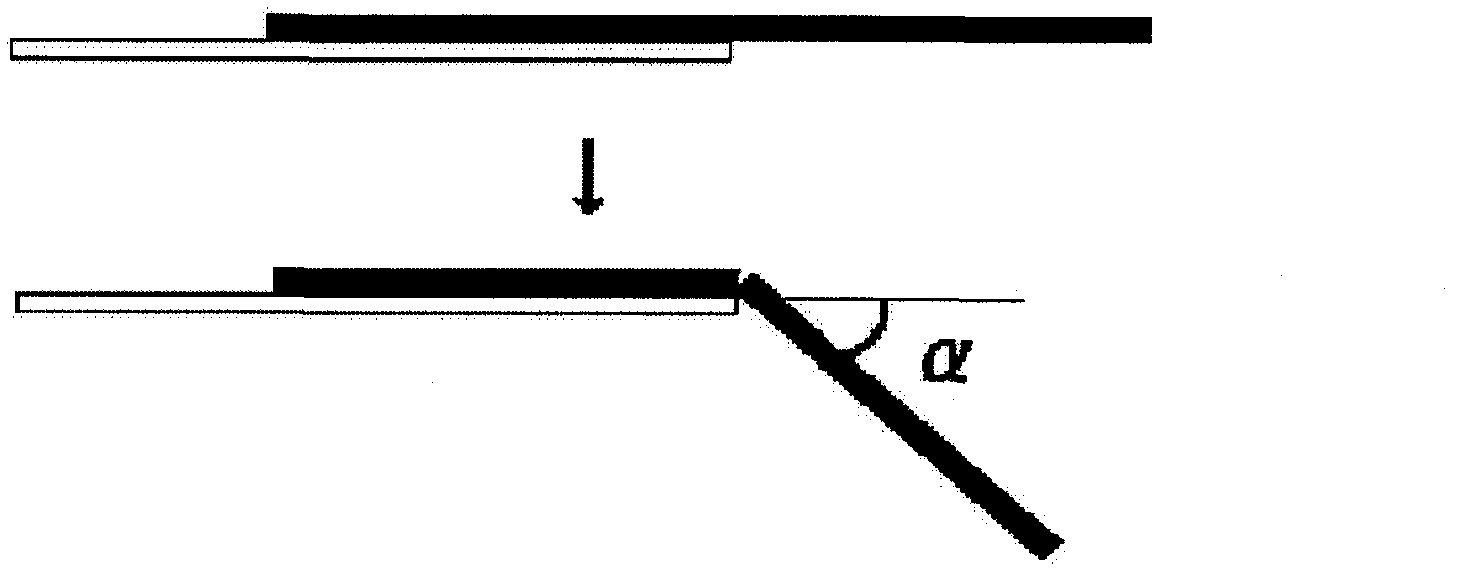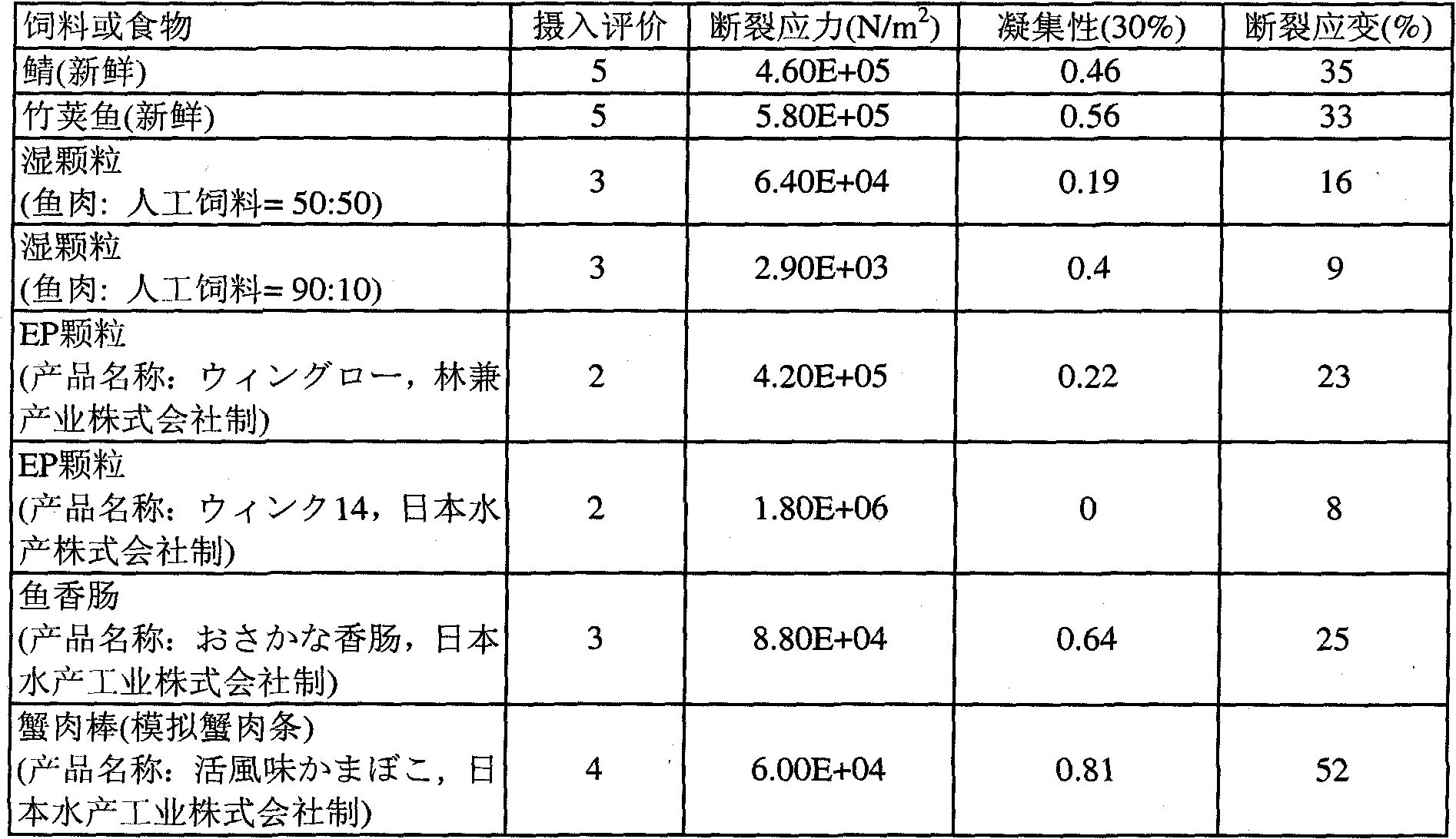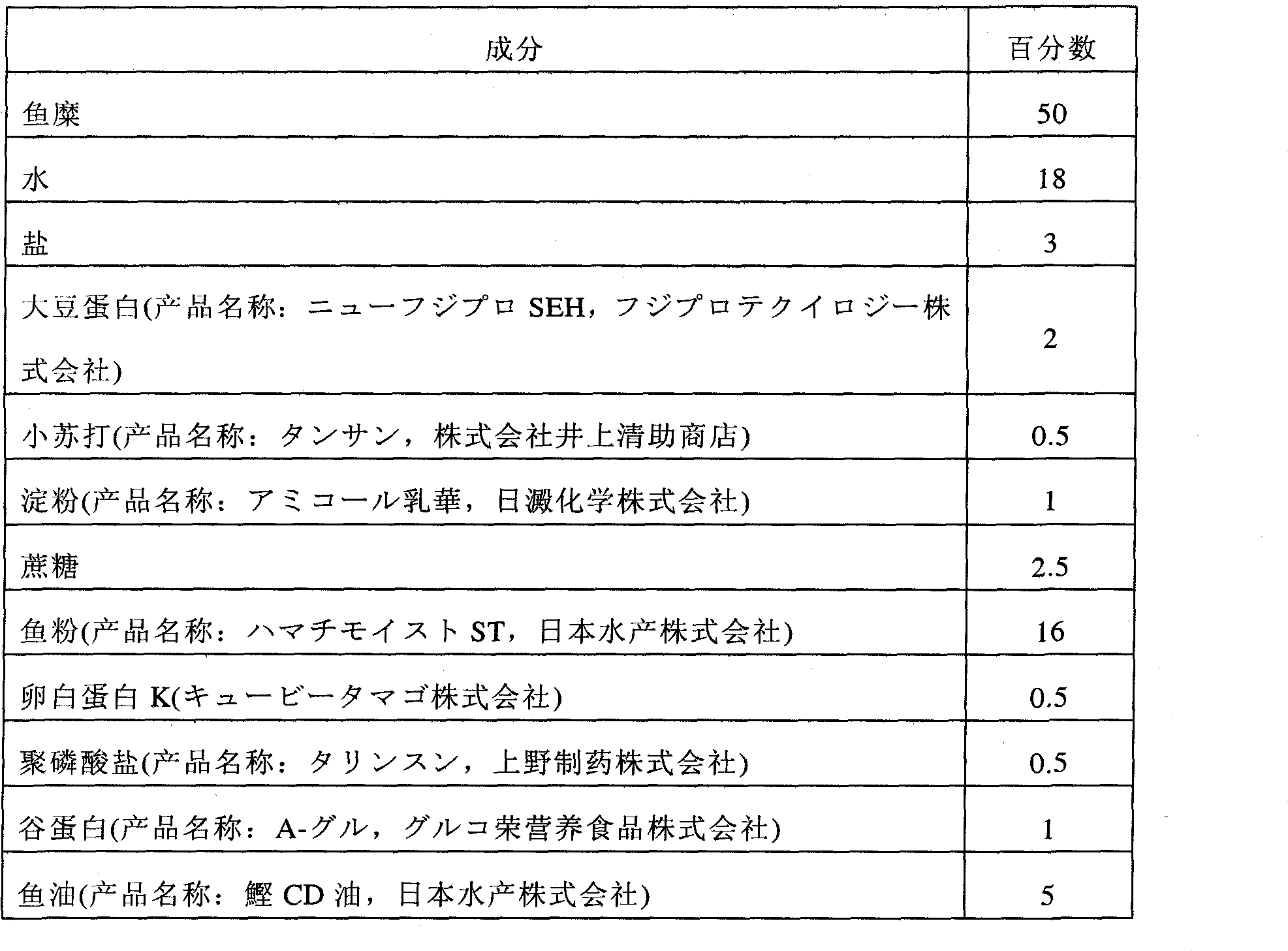Feed for fish farming
A technology of feed and fishmeal, which is applied in the field of fish feed for aquaculture tuna, can solve the problems of artificial feed low preference, high preference, transition delay, etc., and achieve excellent feed intake and feed efficiency, excellent and stable feed shelf life excellent effect
- Summary
- Abstract
- Description
- Claims
- Application Information
AI Technical Summary
Problems solved by technology
Method used
Image
Examples
Embodiment 1
[0110] Feed with surimi-containing outer layer
[0111] By mixing 45 wt% surimi, 18 wt% water, 19 wt% fish meal, 9 wt% fish oil, 3 wt% salt, 0.3 wt% gluten, 2.5 wt% sucrose, 2.0% by weight of polysaccharide thickener (Amicol milk, Nichiden Chemical Co., Ltd. tapioca capryl succinic acid), 2.0% by weight of isolated soybean protein powder (NiyuyifujiproSEH, Fuji Oil Co., Ltd. Co., Ltd.), 1.5% by weight of vitamin mixture, 0.45% by weight of baking soda, 0.45% by weight of ovalbumin, and 0.25% by weight of polyphosphate to prepare the outer layer composition.
[0112] In a mixer, 50% by weight of fish meal, 41% by weight of fish oil, 5% by weight of hydrogenated oil, and 4% by weight of oil-absorbing dextrin (Oil Q No. 50, manufactured by Nichiden Chemical Co., Ltd.) were prepared. layer composition.
[0113] The composition for the outer layer and the composition for the inner layer were introduced into a stuffing machine ("Cobasebun Silhouettes series" manufactured by Koba...
Embodiment 2
[0119] Method: Using the high-protein, high-fat feed obtained in Example 1, the growth characteristics of tuna fish were compared with raw bait. Two circular protected areas with a diameter of 10m were prepared, and 140 tuna fish were placed in each and cultured. The average water temperature during cultivation was 25°C. Fish were fed feed once a day until they were satiated. The amount of feed actually consumed (amount of intake) was calculated by subtracting the amount of feed remaining from the amount of feed provided.
[0120] Results: Throughout the entire test period, the amount of the feed of Example 1 ingested was 50% to 60% by weight of the amount of raw bait. By calculating the number of calories per unit weight of the feed, the number of calories of the feed in Example 1 is 3600 kcal / kg, while the raw bait has a number of calories of 1670 kcal / kg. By ingesting a feed equivalent to approximately half the weight of the raw bait, the fish can consume at least as man...
experiment example 12
[0164] Addition of wheat flour
[0165] Based on the results obtained in Test Example 11, rectangular samples were prepared using the basic formula shown in Table 13 (tapioca starch (etherified): fish meal = 24:53), which was considered as the threshold value of the fish meal content, but In this formulation the addition of wheat flour was increased as shown in Table 14, and the angle α at which cracks appeared was measured.
[0166] As shown in Table 14, the addition of wheat flour improved the angle α at which cracks appeared. Furthermore, it was confirmed that the addition of wheat flour affects the effect of imparting strength to the outer layer.
[0167] Table 14
[0168] Wheat Flour (wt%)
PUM
| Property | Measurement | Unit |
|---|---|---|
| Fracture stress | aaaaa | aaaaa |
| Diameter | aaaaa | aaaaa |
| Diameter | aaaaa | aaaaa |
Abstract
Description
Claims
Application Information
 Login to View More
Login to View More - R&D
- Intellectual Property
- Life Sciences
- Materials
- Tech Scout
- Unparalleled Data Quality
- Higher Quality Content
- 60% Fewer Hallucinations
Browse by: Latest US Patents, China's latest patents, Technical Efficacy Thesaurus, Application Domain, Technology Topic, Popular Technical Reports.
© 2025 PatSnap. All rights reserved.Legal|Privacy policy|Modern Slavery Act Transparency Statement|Sitemap|About US| Contact US: help@patsnap.com



